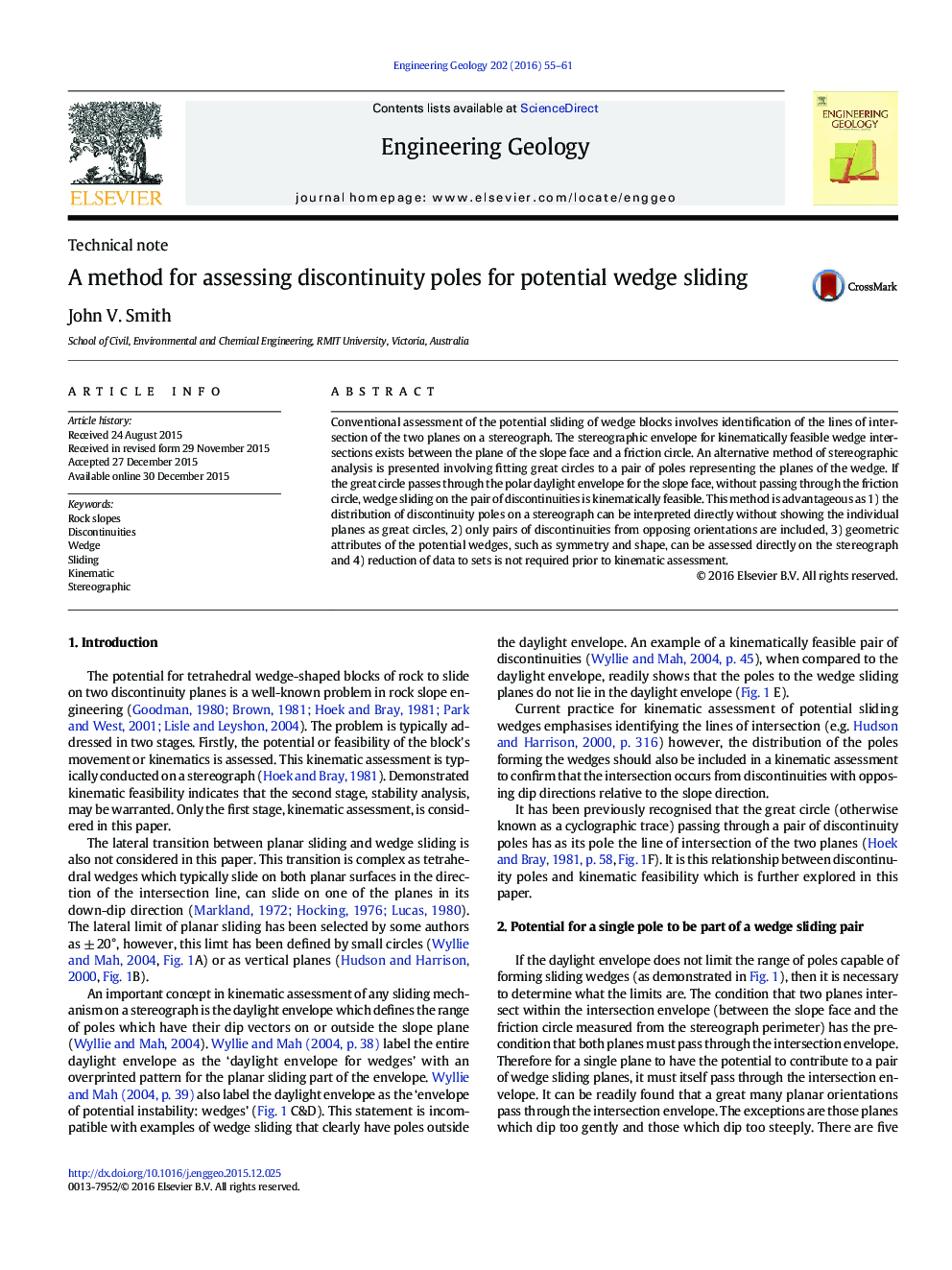| کد مقاله | کد نشریه | سال انتشار | مقاله انگلیسی | نسخه تمام متن |
|---|---|---|---|---|
| 4743183 | 1641783 | 2016 | 7 صفحه PDF | دانلود رایگان |
• Structural geology approach applied to wedges
• The plane passing through two discontinuity poles can be used to assess kinematic feasibility.
• Polar daylight envelope shows kinematic feasibility of wedge poles.
• Geometric attributes of the wedges can be directly assessed on a stereograph.
• Reduction to discontinuity sets not required prior to this kinematic assessment
Conventional assessment of the potential sliding of wedge blocks involves identification of the lines of intersection of the two planes on a stereograph. The stereographic envelope for kinematically feasible wedge intersections exists between the plane of the slope face and a friction circle. An alternative method of stereographic analysis is presented involving fitting great circles to a pair of poles representing the planes of the wedge. If the great circle passes through the polar daylight envelope for the slope face, without passing through the friction circle, wedge sliding on the pair of discontinuities is kinematically feasible. This method is advantageous as 1) the distribution of discontinuity poles on a stereograph can be interpreted directly without showing the individual planes as great circles, 2) only pairs of discontinuities from opposing orientations are included, 3) geometric attributes of the potential wedges, such as symmetry and shape, can be assessed directly on the stereograph and 4) reduction of data to sets is not required prior to kinematic assessment.
Journal: Engineering Geology - Volume 202, 4 March 2016, Pages 55–61
